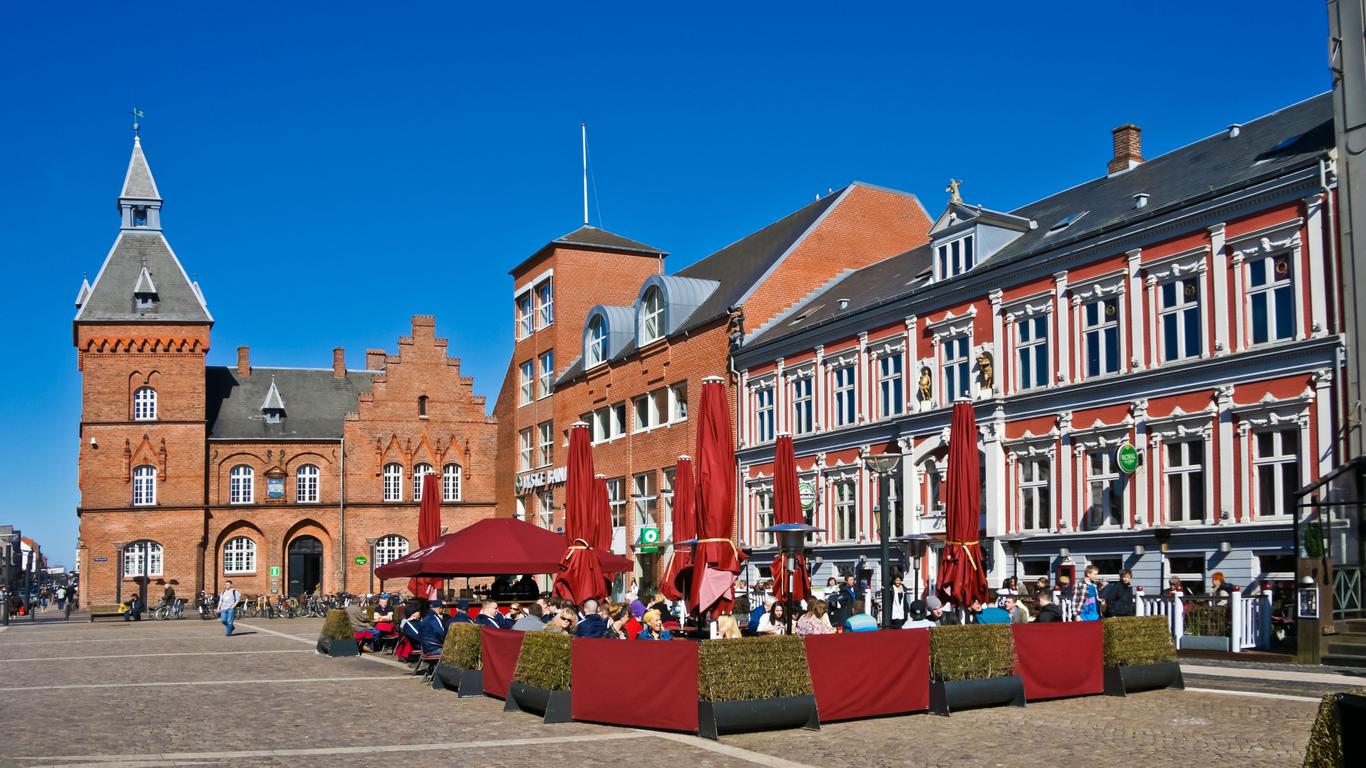Located opposite the island of Fanø on the west coast of Jutland, Esbjerg is the largest North Sea fishing port in Denmark. It’s a hub for oil and gas exploration and home to several engaging museums. Esbjerg also offers easy access to Wadden Sea National Park.
Things to do in Esbjerg
One of the most prominent landmarks in Esbjerg is the nine-metre-high “Man Meets the Sea” sculpture, which was designed by Svend Wiig Hansen to celebrate the city’s 100th anniversary. It stands opposite the Fisheries and Maritime Museum where you can learn about Esbjerg’s historic fishing fleets and its modern-day oil and gas explorations in the North Sea.
Esbjerg is an ideal base for exploring Wadden Sea National Park, which sprawls across tidal flats, beach meadows and wetlands along the coast of Jutland. It’s an internationally renowned resting place for migratory birds and boasts Denmark’s largest population of spotted seals. A highlight of visiting the park is watching its European starlings flying in spectacular formations.
If you’re interested in Denmark’s rich history, make the 30-minute drive south to the Ribe Viking Museum, which features reconstructions of 8th, 9th and 10th-century Viking settlements. Don’t miss the recreated Viking Market where craftspeople and merchants from across Europe congregate to mint coins, sell bread and exhibit their archery and falconry skills.
Getting around Esbjerg
Esbjerg Airport is a 15-minute drive from the town centre and has flights to Aberdeen and Stavanger while trains connect from the Esbjerg railway station to Aarhus and Copenhagen. Regular ferry services travel from Esbjerg to the island of Fanø and buses stop throughout the town. The centre of Esbjerg is compact enough to explore on foot.





